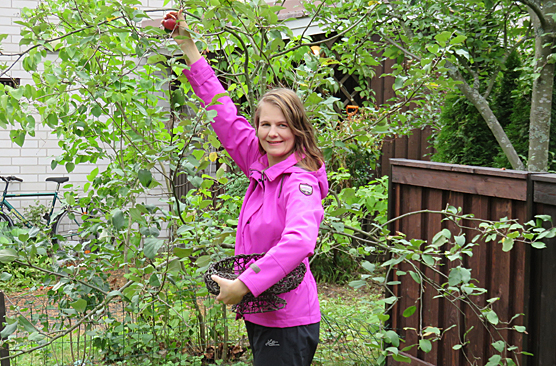
Tuuli Myllymaa. © Matias Myllymaa
As the days grow darker, I visit the fridge more and more often. Good food is a basic need, but it also brings joy – perhaps even love. In October, a current campaign was launched, in which each of us can participate by making good choices at the fridge door: The Love Every Crumb campaign is a refresher course on good food use that lasts over a year and draws attention to food waste and the sorting of biowaste.
Less than a half of biowaste ends up in use
The separate collection of biowaste started gradually in Finland in the 1990s. Currently, about 40 per cent of all biowaste generated ends up as soil and biogas. There is still work to be done in sorting biowaste. Unsorted biowaste ends up in incineration plants with mixed waste, where it causes corrosion and power problems due to both humidity and the salt it contains. Biogas produced from separately collected biowaste, on the other hand, works well as fuel for gas-operated cars and is also suitable for the production of electricity and heat. At the same time, nutrients and organic matter can be used for landscaping or in flower beds.
Valuable resources recovered by reducing waste
However, only inedible ingredients and foods should be put in the biowaste dumpster. Edible food that ends up in biowaste is expensive for society, households and the environment. In Finland, more than 10 per cent of edible food ends up as waste; the share of edible food waste in the entire food chain is estimated to be around 10–15 per cent.
It is worth the effort to reduce the loss of edible food. A piece of bread, cheese or meat that has been forgotten in the fridge and ends up as waste will lose all the resources used to produce it, from the farmer's working time to the use of fertilisers and energy. Choosing the right portion size and using all that you have in your pantry or cupboard when cooking and before going to the grocery store are at least part of the solution. It is precisely these important decisions we make when opening the fridge door.
Solutions from the Circwaste subprojects
In the Circwaste project, many partners are working on subprojects related to food waste and the utilisation of biowaste. Natural Resources Institute Finland (Luke) is currently finalising a national food loss road map, which will be published in early 2021. The road map steers the food chain towards reducing biowaste and food waste by, among other things, encouraging voluntary agreements and proposing the sharing of waste information as part of the National Curriculum. In addition, it encourages restaurants to introduce sales forecasting systems and households to use food waste applications.
The Regional Council of Central Finland’s subproject, in turn, has strengthened the construction of a biogas ecosystem in the region and encouraged the use of biogas for transport. A subproject lead by Turku University of Applied Sciences has provided information on farm sizes to support procurement decisions for biogas plants.
Love Every Crumb!
The Love Every Crumb campaign is carried out in exceptionally broad cooperation, coordinated by the Ministry of the Environment, the Ministry of Agriculture and Forestry, Suomen Kiertovoima association and the Association of Finnish Local and Regional Authorities. Other partners include the Consumers' Union of Finland, Finnish Biocycle and Biogas Association, the Finnish Grocery Trade Association, the Finnish Food and Drink Industries' Federation, the Finnish Hospitality Association MaRa and the Finnish Environment Institute.
The Circwaste project supports the visibility of the campaign and participates in the production of materials. The campaign is sure to give a lot of good tips for the rest of this year and next year. One tip just came to my mind: people have told me that dried breadcrumbs are a great addition to a pasta or salad, just fry the crumbs in a pan with olive oil and season with herbs. Must try them!
Tuuli Myllymaa, Project Manager, Head of Unit, Circwaste project, Finnish Environment Institute SYKE